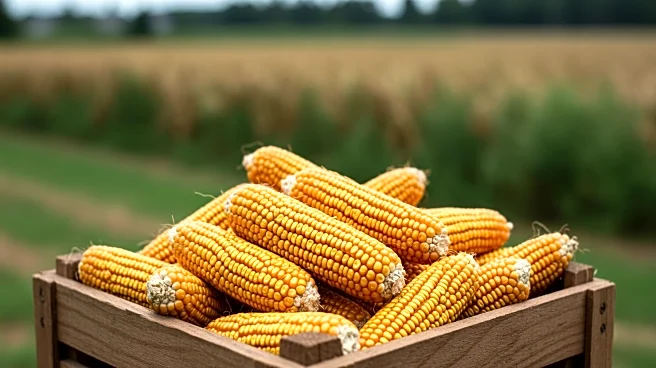Rapid Read • 8 min read
The US Department of Agriculture (USDA) has significantly increased its 2025 corn crop forecast, projecting a record output of 16,742 million bushels. This marks a substantial rise from July's projection of 15,705 million bushels and a 13% increase from 2024's production. The USDA's August Crop Production report, which is the first survey-based outlook of the year, has led to a sharp decline in new-crop corn futures. The forecast includes an increase in planted and harvested areas, with a record-high yield of 188.8 bushels per acre. Analysts had anticipated a lower production figure, making the USDA's report a surprise to the market. The USDA also raised its projection for corn carryover as of September 1, 2026, indicating increased domestic use and exports.
AD
The USDA's revised forecast has significant implications for the agricultural sector and commodity markets. The unexpected increase in corn production could lead to lower corn prices, affecting farmers' revenue and market dynamics. The report suggests a potential oversupply, which may challenge farmers who are not in urgent need to sell their crops. Additionally, the increased production could impact global competitiveness, as US corn prices remain attractive internationally. The forecast also highlights the importance of weather conditions in maintaining these production levels, which could influence future market stability.
The agricultural market will closely monitor weather patterns to ensure the projected yield is achievable. Farmers and traders may adjust their strategies based on the USDA's report, potentially influencing future planting decisions and market behavior. The USDA's projections could also affect international trade negotiations, particularly with China, as the US seeks to expand its export markets. Stakeholders will watch for any changes in trade policies or agreements that could impact demand for US corn.
The USDA's report underscores the volatility and unpredictability of agricultural forecasts, which can have far-reaching effects on economic planning and policy-making. The increased production forecast may prompt discussions on sustainable farming practices and resource management, as higher yields often require more inputs and can strain environmental resources. Additionally, the report may influence future agricultural policy decisions, including subsidies and support programs for farmers facing market fluctuations.
AD
More Stories You Might Enjoy












